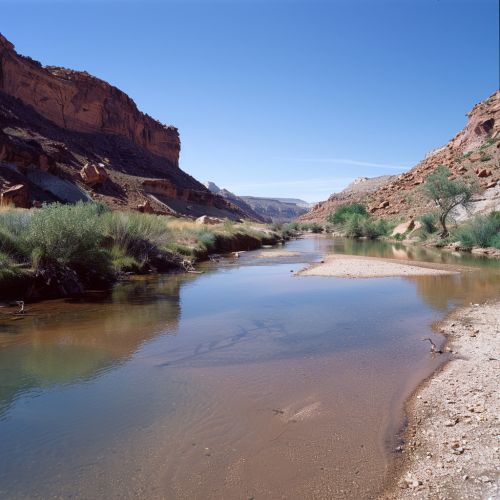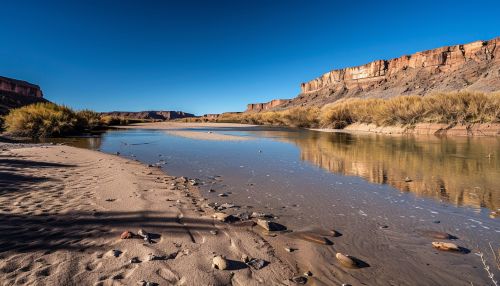Chaco Wash
Geographical Overview
Chaco Wash is a significant geographical feature located in the Chaco Culture National Historical Park in the U.S. state of New Mexico. This ephemeral stream is a crucial element of the park's ecosystem and has played a significant role in shaping the landscape and influencing the human habitation of the area.


Geological Characteristics
Chaco Wash is an ephemeral stream, meaning it only flows in response to precipitation events such as rain or snowmelt. The wash is characterized by a wide, sandy riverbed that can be several hundred feet across, but is usually dry except during periods of heavy rainfall. The wash's course is determined by the topography of the Chaco Canyon, which was carved out by the erosive action of the wash over millions of years.
The geology of the Chaco Wash and its surrounding area is dominated by the Menefee Formation, a geological formation composed primarily of sandstone, shale, and coal. This formation is part of the larger San Juan Basin, a major geological feature of the southwestern United States.
Ecological Significance
Despite its ephemeral nature, Chaco Wash plays a vital role in the ecology of the Chaco Culture National Historical Park. The wash provides a source of water for the park's wildlife, which includes species such as the mule deer, coyote, and various bird species. The wash also supports a variety of plant life, including cottonwood and willow trees, as well as various grasses and shrubs.
The wash's periodic flooding also plays a crucial role in the park's ecosystem by depositing nutrient-rich sediment on the floodplain. This process helps to sustain the park's vegetation and contributes to the biodiversity of the area.
Archaeological Significance
Chaco Wash is also of significant archaeological interest. The wash runs through the heart of the Chaco Culture National Historical Park, which was the center of the ancient Puebloan civilization. The Puebloans were an indigenous people who inhabited the southwestern United States from around 900 to 1300 AD.
The Puebloans built numerous large, complex structures known as great houses along the banks of the Chaco Wash. These structures, which include the famous Pueblo Bonito, were built using sandstone blocks and timber hauled from distant sources. The location of these structures suggests that the Chaco Wash may have been used as a transportation route by the Puebloans.
Current Use and Management
Today, Chaco Wash is managed as part of the Chaco Culture National Historical Park by the National Park Service. The wash and its surrounding area are protected due to their ecological, geological, and archaeological significance.
Visitors to the park can view the wash and explore the ancient Puebloan structures along its banks. However, due to the wash's ephemeral nature and the potential for flash flooding, visitors are advised to exercise caution when exploring the area.
